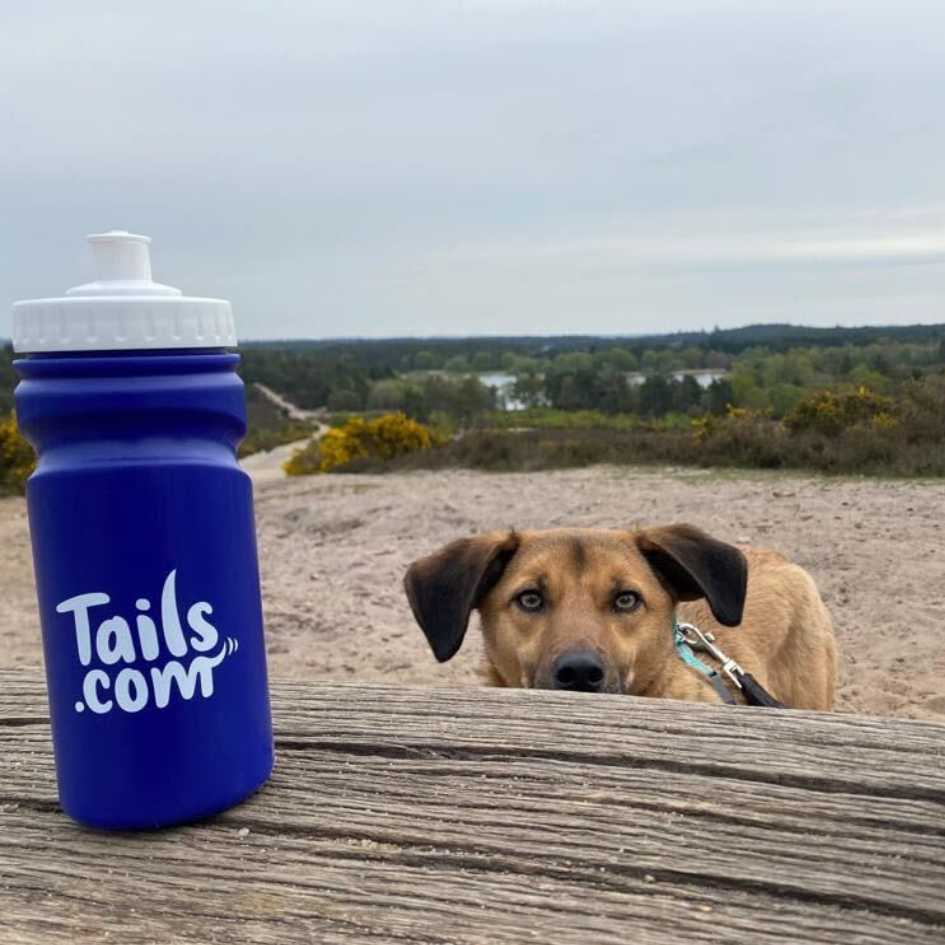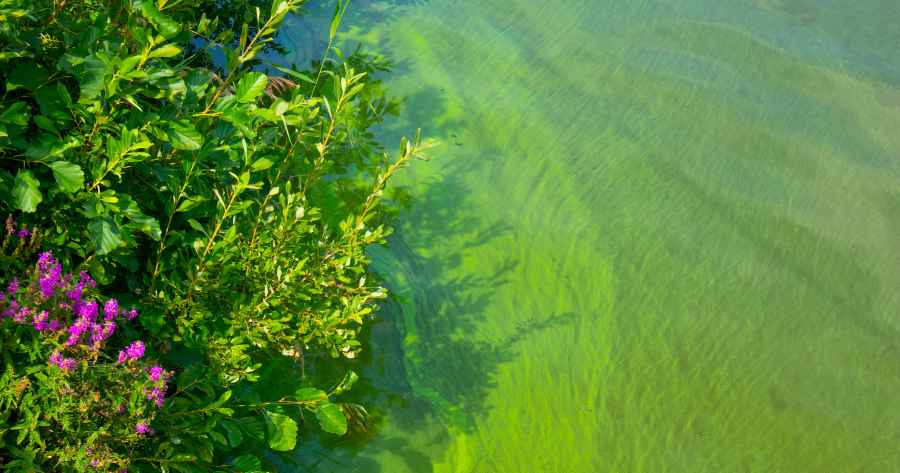Some dogs are natural born water-babies. Others, wouldn’t dream of getting their feet wet! But whether it’s a drink from a pond or a dip in a lake, you need to watch out for blue-green algae when you’re out and about with your dog.
Some types of blue-green algae contain nasty toxins that can make your dog very ill. In some cases, it can be fatal. And if you touch it or swallow it yourself, it can also make you very poorly. It’s more prevalent in warmer weather, so now’s the time to brush up and enjoy a safe summer with your dog.
What does blue-green algae look like?
Well, you’d expect it to be a bluey-green colour surely? But that’s only one version of it. ‘Blue-green algae’ is in fact a catch-all description for a group of bacteria, called cyanobacteria. They are not even algae really; they just give the appearance of algae when they float on the surface of the water in patches or clumps.
Here’s what it can look like in its various guises:
- A blue-green scum that looks a bit like pea soup.
- Green flakes, greenish bundles or brown dots in a pond, lake or stream.
- A green, blue-green or brownish paint on the surface of the water.
- Foam around the edges of ponds and lakes.
Where is blue-green algae?
You’ll usually notice it during and after hot spells of weather – especially after heat waves. It’s most commonly found in non-flowing fresh water, so keep your eyes peeled when walking near:
- Streams
- Lakes
- Ponds
- Rivers
- Reservoirs
- Canals
If you suspect blue-green algae is in any water along your walk, best to keep your dog on a lead and avoid the risk of them coming into contact with it.
What are the symptoms of blue-green algae poisoning?
Even if your dog hasn’t swum in or drank from contaminated water, just paddling in it is risky. This is because they can ingest the algae when they lick or groom themselves afterwards. The harmful toxins stop a dog’s liver from functioning properly, so take action quickly if you notice any of these symptoms after your dog’s been in contact with water:
- Vomiting
- Diarrhoea
- Seizures/fitting
- Weakness, collapse or unconsciousness
- Disorientation or confusion
- Drooling
- Breathing difficulties
These symptoms can show up just 15 minutes to an hour after contact with contaminated water. Blue-green algae needs rapid treatment, so the sooner you contact your vet, the higher the chances of recovery.
How can I protect my dog?
None of us want blue-green algae to get in the way of canine capers in the water. Follow our three simple ‘S’ rules to keep things relaxed, fun and safe when you’re out and about:

1 STEER CLEAR – of ponds or lakes that you know or suspect have blue-green algae.
2 SAFE DRINKING – take water with you, instead of letting your dog drink from the edges of ponds and lakes.
3 SIGNS – keep an eye out for council sign posts or posters warning of blue-green algae in the area.
Blue-green? Tap the app.
If you suspect blue-green algae in the water, hit the app – Bloomin’ Algae. The UK Centre for Ecology & Hydrology has a citizen science app for reporting blooms of blue-green algae. You can also use it to check a new area you’re planning to go to with your dog. The app is helping speed up awareness and get warnings out quicker to affected areas.
Not sure what it is? Give it a miss.
There are, of course, some types of floating greenery that are no cause for concern at all, like duckweed, for example. But if you’re in any doubt it’s blue-green algae, we’d recommend sticking to dry land. That’s not the end of aquatic fun for those water-babies though. Be in the know about dog-safe swimming spots by asking other local dog walkers, skimming your local FB feed/groups or checking with your local environment agency. If you’re lucky, you might even be within striking distance of a designated dog pond – a quick online search can find your nearest one.

